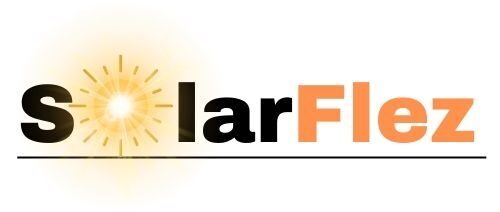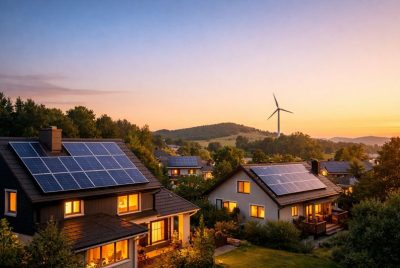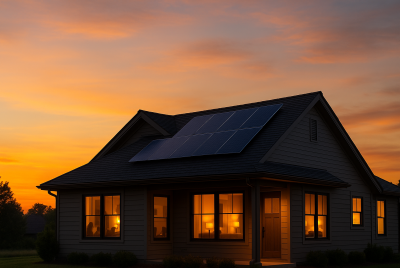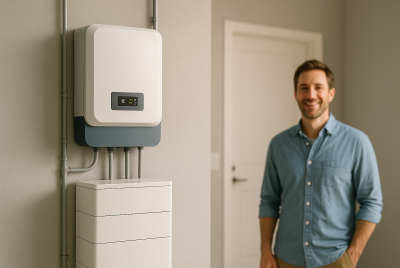Solar Power Solutions: A Simple Guide to Going Solar
Alright, let’s talk about solar power. You know, that magical sunlight we get every day (well, maybe a little less magical when it’s blazing hot). But here’s the cool part: what if I told you that sunlight could actually power your whole house? It’s true, and it’s not even complicated. In this guide, I’ll break down everything you need to know about solar power—what it is, how it works, and why it’s a pretty fantastic choice if you’re ready to save on energy bills while helping the planet.
So, What Is Solar Power, Really?
Let’s keep things easy. In essence, solar power is solar energy. We’re not referring to the warmth that a sunny day brings to your skin. No, the goal here is to capture the sunlight and turn it into electrical power. Solar panels can help with that. They act as tiny energy harvesters, absorbing solar radiation and converting it into electricity for your house, place of business, or even your camper, if you’re interested in that kind of thing.
Why Bother with Solar Power?
Why switch to solar power? Excellent query. It is environmentally friendly, to start. Solar energy is helpful for the environment because it doesn’t emit any harmful emissions. But let’s face it, saving green (sorry, money) is just as nice as going green. A solar installation can result in significant energy bill savings over time. You can continue to benefit from those savings for many years to come because solar panels survive for decades.
Solar Power and the Environment: Making a Difference
Let’s get a little “save the world” here. Every time someone switches to solar, it reduces our collective carbon footprint. By using solar instead of, say, coal or gas, we’re doing a little bit to protect our planet. Think about it like planting a bunch of trees without actually planting trees. (Not that I have anything against trees!)
Meet the Heart of Solar Power: The Panels
Let’s talk about the real stars here—solar panels, or as they’re officially called, photovoltaic (PV) panels. These guys capture sunlight and turn it into usable power. You’ll usually see them on rooftops, though they can also be ground-mounted. The best part? They just sit there silently, doing their thing every day.
Types of Solar Panels: Find Your Fit
Turns out, not all solar panels are the same. There are a few types:
- Monocrystalline: These are like the iPhone of solar panels—sleek, efficient, and pricier.
- Polycrystalline: A bit more budget-friendly but slightly less efficient. Still gets the job done.
- Thin-Film: Lightweight and flexible, these are great for things like RVs or unique projects.
How Do Solar Panels Work?
Let’s get a little nerdy for a second (promise it won’t last long). Solar panels are made of silicon, and when sunlight hits them, it knocks electrons loose. This creates an electric current, which is then converted into usable electricity for your home. Simple, right? It’s like catching sunlight and turning it into juice for your home.
Don’t Forget the Inverter
Now, solar panels produce direct current (DC) electricity, but your home runs on alternating current (AC). That’s where the inverter comes in. It’s like the translator in your solar setup, converting DC into AC so your appliances can use it. Without an inverter, you’re not getting any usable power (kind of a big deal).
Battery Storage: For the Rainy Days
Ever wish you could save the sunshine for later? That’s exactly what a battery does. Solar batteries store extra power your panels collect during the day, so you can use it when the sun’s gone down or on cloudy days. Think of it as your solar power bank.
Off-Grid vs. Grid-Tied Systems: The Big Decision
Here’s where you get to make a choice:
- Off-Grid: You’re fully independent, not connected to the main power grid. This is perfect for remote locations or if you want full energy independence.
- Grid-Tied: You’re connected to the grid, using solar most of the time but with backup from the utility when needed. It’s the most common setup for homes.
Net Metering: When the Grid Pays You
Here’s something that might surprise you: if you produce more solar power than you need, some utilities will actually pay you for it through a program called net metering. Imagine your power bill shrinking because you’re selling energy back to the grid! (Trust me, it feels pretty great.)
What’s This Going to Cost Me?
Let’s be real; the cost of installing solar panels varies. It depends on your location, energy needs, and system size. But here’s the kicker—most people see a return on their investment within 5-10 years. And don’t forget those tax credits and rebates! Governments and utility companies often offer incentives to make solar more affordable.
Tax Credits and Rebates: The Cherry on Top
Speaking of incentives, let’s talk about the perks. There are often government and utility programs that give you money back for installing solar. It’s like getting a cash reward for doing something smart (not a bad deal, right?).
Solar Panel Maintenance: Surprisingly Low Key
One of the best things about solar panels is that they’re basically set-it-and-forget-it. Every few months, you might want to give them a quick clean to keep them efficient (think of it like giving your car a car wash), but other than that, there’s not much to it.
Finding the Right Installer: Do Your Homework
Picking the right installer is key. Look for someone certified with solid experience in solar installations. Ask about warranties, service plans, and how long the install will take. You want someone you trust because this setup is going to last you a good couple of decades.
Feeling Handy? Check Out DIY Solar Kits
For the do-it-yourselfers out there, DIY solar kits are an option. They come with everything you need to install a basic solar setup. It’s cheaper but requires a bit of technical skill (imagine building a complex Lego set). Just make sure you’re comfortable with electrical work!
Can Solar Power Run My Whole House?
Absolutely, if your setup is big enough! A good-sized solar system can handle most, if not all, of your energy needs. From lights to appliances to heating, solar can do it all. Of course, the size of your system and your energy usage will play a big role.
Solar Power for Businesses: Taking it to the Next Level
Businesses are cashing in on solar too, cutting operational costs and building a greener image. Commercial systems can power just about anything a company needs. Imagine a factory or a large office building running on sunlight—pretty futuristic, huh?
Solar Power for RVs and Boats: Power on the Move
Going off-grid isn’t just for homes. With portable solar systems, you can bring the sun’s power with you on the road or water. Perfect for RVs, boats, or tiny homes, portable solar makes adventure a little greener (and you don’t have to sacrifice comfort).
Heating Up with Solar Water Heaters
This is a cool twist on solar power—solar water heaters use sunlight specifically for heating water. It’s efficient, cost-effective, and means your hot showers are eco-friendly. It’s a great way to cut back on those energy bills, too.
Solar-Powered Gadgets: Bringing Solar to Everyday Life
Solar isn’t just for big projects. There are tons of solar-powered gadgets out there—chargers, lights, even solar backpacks. These handy items let you tap into solar power for everyday convenience, no matter where you are.
Solar Landscaping: Lighting Up Your Yard
Solar-powered garden lights are a quick win for eco-friendly landscaping. These little lights soak up sunlight all day and automatically light up your garden at night, creating a cozy glow without adding to your electricity bill.
The Future of Solar Power: What’s Next?
Solar technology is constantly improving. Researchers are working on making panels more efficient and affordable. And with things like solar shingles (yes, they look like regular roof tiles) becoming more popular, solar power is only going to get more stylish and accessible.
Common Myths About Solar Power
Let’s bust a few myths here:
- Solar only works in hot places: Nope! Solar panels need sunlight, not heat.
- It’s too expensive: Prices have dropped, and incentives make it more affordable than ever.
- Solar needs constant maintenance: Not true; a quick clean every now and then is all it needs.
Is Solar Power Right for You? A Quick Checklist
Ask yourself:
- Are you ready to save on energy bills?
- Do you want to make a positive environmental impact?
- Is your roof or property suitable for solar panels?
If you’re nodding along, solar might be just the thing for you.
Solar Power Products: Options for Every Need
The market is full of innovative solar-powered products designed for various applications beyond traditional energy systems. Here’s a look at some of the top product categories:
- Solar Panels for Homes and Businesses
Residential and commercial solar panels remain the most popular solar products. Options include monocrystalline, polycrystalline, and thin-film panels, each suited to different needs and budgets. Companies like Tesla and SunPower offer high-efficiency options with sleek designs for home and business use. - Solar Generators
Solar generators are compact systems that store solar energy for on-demand use. Ideal for backup power during outages or off-grid situations, these generators are equipped with battery storage, inverters, and often come as portable units. - Solar Water Heaters
Designed specifically for heating water, solar water heaters utilize solar collectors to capture heat and provide an eco-friendly solution for household and industrial water heating. They’re particularly popular in areas with high sunlight availability. - Solar-Powered Gadgets
The portable solar category includes items like solar phone chargers, solar lights, solar backpacks, and even solar-powered outdoor speakers. These gadgets are perfect for travel, camping, or eco-conscious daily use. - Solar Lighting Solutions
Solar lights are versatile and available in numerous forms, from garden lights to security lighting. These lights charge during the day and provide illumination at night, making them energy-efficient and cost-effective for both residential and commercial properties.
Key Research and Insights in Solar Power Solutions: Paving the Way for a Sustainable Future
MIT Energy Initiative’s “The Future of Solar Energy” – This comprehensive study from MIT examines solar energy’s potential for large-scale electricity generation, focusing on photovoltaics (PV) and concentrated solar power (CSP). It provides detailed projections for solar energy’s growth, discussing how market conditions and policies can support or hinder solar adoption. This research also emphasizes the role of solar in developing regions, where off-grid solutions can provide vital access to electricity..
National Renewable Energy Laboratory (NREL) – NREL leads research on enhancing the efficiency, durability, and affordability of solar technologies. Their work covers areas like photovoltaics (including perovskite solar cells), grid integration, and concentrating solar power. NREL’s research provides valuable insights into improving solar technology’s reliability, making it more feasible for widespread adoption. .
Review on Solar Technology and Sustainable Development – A study published in Current Environmental Engineering reviews solar power’s role in achieving sustainable development goals. This research highlights solar energy’s contributions to reducing greenhouse gas emissions and its role in providing affordable, reliable energy to underserved populations.
Summary: Why Solar Power Makes Sense
Solar power is a smart way to cut down on bills and go green. It’s an investment that pays off, delivering clean, renewable energy that’s easy to maintain and good for the planet. Whether you’re looking to power a house, business, or something on wheels, there’s a solar option out there. So, are you ready to give solar a shot? Let’s soak up the sun’s power and make a difference.
FAQs
How much does it cost to install solar panels?
The cost varies, but most homeowners see a return on their investment within 5-10 years thanks to energy savings and incentives.
Do solar panels work on cloudy days?
Yes! They still capture energy on cloudy days, though they’re more efficient in direct sunlight.
What’s net metering?
It’s a program where utilities buy back your extra solar energy, potentially lowering your power bill.
How long do solar panels last?
Solar panels typically last 25-30 years, which makes them a long-term investment.
Do solar panels require a lot of maintenance?
Not really! Just an occasional cleaning to remove dust or debris.
Solar power is accessible, affordable, and good for the planet. So, what do you think? Ready to join the solar movement?




